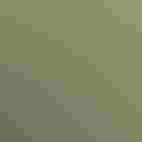Acorn Woodpecker
At a Glance
A clown-faced western woodpecker with a complicated social structure, living in small colonies. Best known for its habit of hoarding acorns: the birds drill small holes in a dead snag, then harvest acorns in fall and store them in these holes, to be eaten during winter. Such a "granary tree" may be used for generations and may be riddled with up to 50,000 holes. Nesting is a group activity, with several adults (up to 12 or more) taking part in incubating the eggs and feeding the young in a single nest.
All bird guide text and rangemaps adapted from Lives of North American Birds by Kenn Kaufman© 1996, used by permission of Houghton Mifflin Harcourt Publishing Company. All rights reserved.
Category
Tree-clinging Birds, Woodpeckers
IUCN Status
Least Concern
Habitat
Arroyos and Canyons, Forests and Woodlands, High Mountains, Shrublands, Savannas, and Thickets
Region
California, Northwest, Southwest, Texas
Behavior
Direct Flight, Flap/Glide, Undulating
Population
7.500.000
Range & Identification
Migration & Range Maps
Mostly permanent resident throughout range (which extends south to Colombia). Stragglers may appear far from nesting areas at any season. If acorn crops fail, may stage small invasions to lowland valleys in fall and winter.
Description
9" (23 cm). Black above and on chest, red cap, strong face pattern, white eyes. In flight, shows white rump, small white wing patch. Female has black bar separating red cap from white forehead.
Size
About the size of a Robin
Color
Black, Red, White
Wing Shape
Broad, Rounded
Tail Shape
Multi-pointed, Wedge-shaped
Songs and Calls
A loud ja-cob, ja-cob or wake-up, wake-up.
Call Pattern
Rising
Call Type
Chirp/Chip, Drum, Rattle, Scream
Habitat
Oak woods, groves, mixed forest, oak-pine canyons, foothills. Seldom away from oaks. Most common where several species of oaks occur together (this insures against total failure of local acorn crop, as different oaks respond to different conditions). May be in open oak groves near coast, pine-oak woods in mountains, streamside sycamores next to oak-covered hillsides.
Sign up for Audubon's newsletter to learn more about birds like the Acorn Woodpecker
Behavior
Eggs
3-7. White. Nests with more eggs (up to 17 recorded) must result from more than one female laying. Incubation mainly by both parents at first, with helpers soon joining in; incubating birds take turns, with rapid turnover, sometimes changing places many times per hour. Incubation period 11-14 days.
Young
Are fed by both parents and by helpers, and leave nest at about 30-32 days. 1-2 broods per year, possibly sometimes 3.
Feeding Behavior
Members of group harvest acorns in fall, store them in hole-studded trees, feed on them in following seasons. Insects are gleaned from surface of tree, or caught in swooping, acrobatic flight. Unlike most woodpeckers, rarely or never excavates in wood for insects. May feed on sap, digging pits in bark or visiting those made by sapsuckers.
Diet
Omnivorous, eats many acorns and insects. Acorns make up about half of annual diet, and are of major importance during winter. Also feeds on insects, particularly ants. Diet also includes various nuts, fruits, seeds, sometimes eggs of other birds.
Nesting
Breeding group consists of pair, usually assisted by additional birds, generally the pair's earlier offspring or other related individuals. Group may consist of 10+ birds (as many as 16), which defend communal food stores and nesting territory year-round. Nest site is a cavity in tree (almost always dead tree or dead branch of live tree), 5-60' above ground, usually 12-30'. Excavated by both sexes and by helpers.
Conservation
Conservation Status
Still widespread and common. Reliance on specific oak habitats may make it vulnerable to the effects of climate change.
Climate Threats Facing the Acorn Woodpecker
Choose a temperature scenario below to see which threats will affect this species as warming increases. The same climate change-driven threats that put birds at risk will affect other wildlife and people, too.










